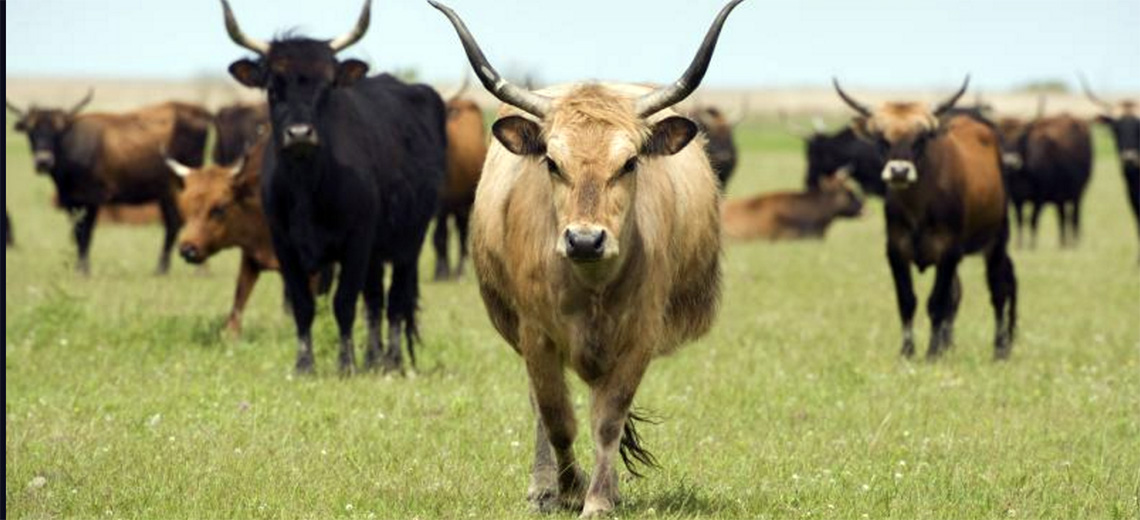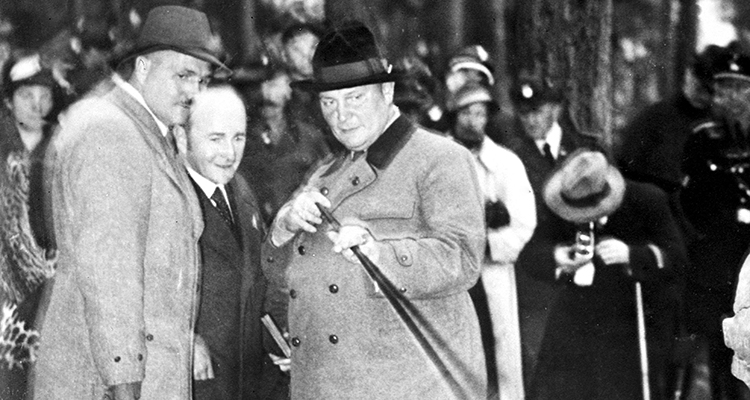
Nazis Stole Animals for Aryan Breeding Programme
Throughout most of the Second World War zoologists worked on the recreation of selected strong animals to be released into special Germanic fauna
By Kent Kristensen, kk@sdu.dk
It is widely known that the Nazis pursued a special racial policy with regard to humans. On the other hand, few people are aware that the German powers also had a breeding programme to promote special Aryan animal species.
In fact, right up until 1944 the Nazis worked on a plan to transform conquered areas in Eastern Europe to German fauna inhabited by particularly strong animals. The animals in question would be bred according to a particular pattern so they acquired certain properties.
This information comes from Hans Christian Petersen, an Associate Professor at SDU. One of his areas of research is biological anthropology.
- Two zoologist brothers led the project. Their goal was to recreate a range of extinct animals, which had previously existed in Germany. Through breeding they would combine hereditary genes from various extant races, which were closely related to the extinct animals. Their main focus was the auroch, a large, very impressive creature, says Hans Christian Petersen.
The two brothers had already been working on their ideas during the 1920s. The idea corresponded perfectly with the line of thought, which prevailed in the German regime from 1933. The top echelons of the Nazi party supported the project both financially and politically.
 Lutz Heck (left) and Hermann Göring. Photo: Polfoto
Lutz Heck (left) and Hermann Göring. Photo: Polfoto
Hermann Göring showed a particular interest in the zoologists’ efforts. In addition to being Hitler's Deputy, Göring also had a huge interest in hunting and animals.
Fanatical brother
The more ambitious of the two brothers was called Lutz Heck, Director of the Berlin Zoo. In the wake of the German soldiers’ campaign in Eastern Europe, he travelled to Poland, which had a number of the animals he wanted to use in his breeding programme.
He toured zoos and nature reserves in order to secure the most suitable specimens. The Warsaw Zoo was of particular interest, because at the time it was famous for its rare species.
- Lutz Heck took them back to Germany with him. One of his explanations was that he wanted to protect the animals, but in reality he looted the zoo, says Hans Christian Petersen.
The German Nazi/zoologist was particularly interested in reviving two species. These were the European auroch, which became extinct in 1627, and the European wild horse, the tarpan, which became extinct in 1887.
- Lutz Heck’s project served several purposes. On one hand, the Nazis wanted to recreate a number of original animal species. It is hardly coincidental that they were particularly interested in large, strong animals, which perfectly matched the German myth of strength and invincibility. On the other hand, there was an implicit colonial task in the project. The idea was to convert several Eastern European areas to indigenous Germanic countryside. For example, the Nazis removed local inhabitants from a large area of countryside called Białowieża on the border between Poland and Belarus. The goal was to ‘Germanise’ the area with German fauna and release wild animals, explains the SDU scientist.
Working on the basis of a specific theory
However, the Germans never succeeded in breeding the extinct species. Lutz Heck worked on the basis of a theory that the genes from an extinct animal remain in the gene pool of the species’ extant descendants: in the case of the auroch, in various races of domestic cattle. So Heck believed that, if he continued to cross breed the animals that most resembled the extinct ones, he would finally arrive at the genes, which their thoroughbred ancestor possessed.
- As a biologist, I would question whether, for example, you can reconstruct an auroch by using extant domestic cattle. You could certainly breed a new race, which in some respects would resemble the original wild form. And that is what happened for Heck. So, in terms of his original goal, he didn’t get very far, says Hans Christian Petersen.
- It was a weird project. They clearly lacked a portion of the original genome, and I also believe it is more important to save extant animal species and races, rather than recreate some that became extinct 400 years ago.
In practice, the Heck brothers bred a race of domestic cattle, which were somewhat smaller than the original auroch. A more positive offshoot of their project was that the new breed of cattle seems to be able to contribute to the kind of natural conservation, which we refer to as ‘rewilding’.
Escaped further charges
It was not only animals that Heck fashioned for his breeding programme. Another reason he brought so many stolen animals to Berlin was that he had an ambition to create a unique zoo in the city.
Even though he lost his job as Director of the Berlin Zoo after the war, he escaped further charges, and for many years not many people knew about the Nazis’ Aryan animal programme.
- This may be due to the fact that the looting mainly affected countries in Eastern Europe, and for many years the only literature on the subject was in Polish. Of the four major victors, only the Soviet Union was interested in pursuing Heck. Even though he was a dedicated Nazi, he was only regarded as one of many renegades, says Hans Christian Petersen, who has given lectures on Lutz Heck and his breeding programmes.
Lutz Heck died in 1983, shortly before his 91st birthday.
Photo: Wikipedia/Mikael Parkvall.
Contact
Hans Christian Petersen, PhD is a biologist. He is an Associate Professor in the Department of Mathematics and Computer Science (IMADA) at SDU. He conducts research into biological anthropology and applied statistics. He is a member of the Network of Nazism and Holocaust Studies (NNHS).
The Zoo Keeper's Wife
Even though most of the literature on the subject of the Nazis’ theft of animals for their breeding programme is in Polish, a few years ago Magnolia Press published a book titled The Zookeeper‘s Wife. It is the story of the couple who managed the Warsaw Zoo and their relationship with Lutz Heck. It also describes how the couple managed to hide Polish Jews from the Germans. The book was recently adapted for the screen.